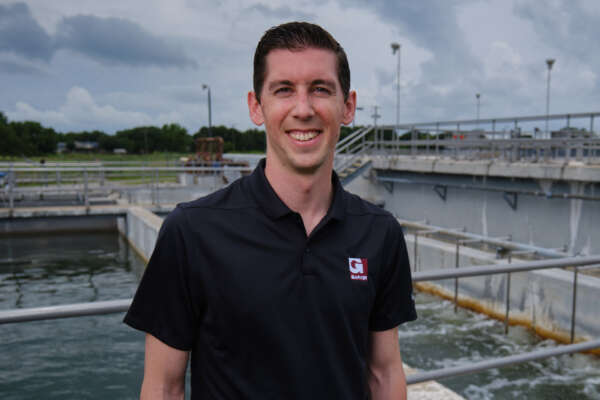Central Texas Water Infrastructure Team Leader Ian Toohey, PE, and Distribution System Water Quality Practice Lead Ashley Pifer, Ph.D., PE, are set to address vital water industry topics during the Texas American Water Works Association Capital Area Chapter Virtual Seminar next week.
Toohey, who works with clients in Central Texas to maintain and grow their water and wastewater infrastructure, will detail how Garver helped the City of Pflugerville, Texas become the first water project in the state to acquire funding from the U.S. Environmental Protection Agency’s (USEPA) Water Infrastructure Finance and Innovation Act (WIFIA). Pifer, who focuses on working with drinking water utilities to improve water quality and maintain regulatory compliance, will present a case study on the benefits of full-system water quality studies, including water treatment process evaluations and distribution system hydraulic modeling.
Read below for more detailed information, and click here to register: bit.ly/3uxWUt8

Central Texas Water Infrastructure Team Leader Ian Toohey, PE, and Amy Giannini, PE, City of Pflugerville | The Story of the Pfirst WIFIA-Pfunded Water Project in Texas | 11:35 a.m., Feb. 16
The City of Pflugerville is currently expanding its surface water treatment plant (SWTP) to 30 MGD. Due to limitations on the availability and structure of the Drinking Water State Revolving Fund (DWSRF) imposed by the Texas Water Development Board (TWDB), the City chose to broaden its search for financing solutions. This led the City to research, apply and be selected for a loan from the USEPA’s WIFIA Program, the first of its kind to a municipal water utility in Texas.

Distribution System Water Quality Practice Leader Ashley Pifer, PhD, PE, and Chelsea Hawkins, MSc, Esq., SJWTX | Gaining a System-Wide Understanding of Water Quality Through Historical Data and Hydraulic Modeling | 12:35 p.m., Feb. 15.
SJWTX treats and distributes surface water and groundwater to its customers near Canyon Lake. SJWTX initiated a water quality study to better understand and control disinfection byproduct (DBP) formation in their system. This case study demonstrates the use of water quality data from water treatment plant and distribution system monitoring with hydraulic modeling to identify root causes for water quality observations within water systems.
To learn more about what Garver’s Water and Wastewater Team can do for you, visit our Water and Wastewater services page.








